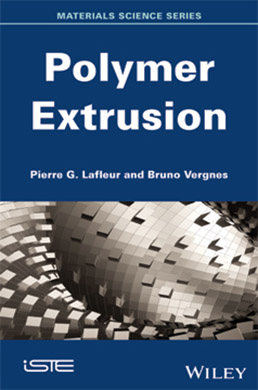
Extrusion is by far the most important processing and shaping method for thermoplastic polymers, concerning almost all synthetic polymers, as well as elastomers or food materials.
Extrusion is by far the most important processing and shaping method for thermoplastic polymers, concerning almost all synthetic polymers, as well as elastomers or food materials.
Polymer Extrusion details the two key extrusion procedures: single-screw and twin-screw extrusion. Single-screw extrusion is mainly used to manufacture finished goods or semi-finished products, as such, more than 90 million tons of thermoplastics are processed every year.
Twin-screw extrusion may be divided into two systems: contra-rotating systems used within the context of PVC extrusion, for the manufacture of pipes or profiles; and co-rotating systems, which are currently experiencing a very important development, due to their increased adaptability and flexibility, enabling the manufacture of specific materials (polymer blends, thermoplastic elastomers, filled polymers, nanocomposites).
The authors present the physics of the mechanisms at stake, then propose models of varying complexity in order to describe these mechanisms, before moving forward in the interpretation of results and the control of flow conditions. This book is particularly aimed at engineers and technicians, researchers, and Masters or PhD students of plastics manufacturing.
1. Continuum Mechanics, Rheology and Heat Transfer Overview.
2. Calculation Methods.
3. Single-Screw Extrusion.
4. Co-rotating Twin-Screw Extrusion.
5. Profile Extrusion.
6. Production of Films and Sheets.
7. Wire Coating and Cable Insulation.
Pierre G. Lafleur is Professor of Chemical Engineering at École Polytechnique de Montréal, Québec, Canada.
Bruno Vergnes is Senior Scientist at CEMEF - MINES ParisTech in France.